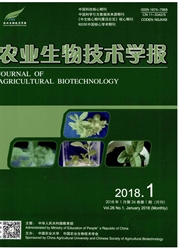

 中文摘要:
中文摘要:
对大黄鱼(Pseudosciaena crocea)进行8.5℃急性低温胁迫处理,利用肝脏进行蛋白质组双向电泳分析。凝胶图谱经PDQuest软件分析,低温胁迫组大黄鱼蛋白点共1593±41个,对照组1620±37个。共有16个蛋白点在低温胁迫后,表达量发生显著变化。从中挑选4个差异蛋白点进行基质辅助激光解析电离飞行时间质谱(MALDI-TOF-MS)或液相色谱串联质谱(LC-MS/MS)分析,数据库搜寻。结果显示:低温胁迫后,大黄鱼肝脏N-乙基马来酰亚胺敏感的融合蛋白(NSF)、角蛋白18(CK-18)和2-cys peroxiredoxins(2-CysPrxs)表达显著下调,而肌球蛋白重链(MHC)表达显著上调。结果提示,在急性低温胁迫下,大黄鱼体内环境的动态平衡被打破,当这种变化超过了大黄鱼的机体调节能力,就会引起大黄鱼的各种生理反应,甚至死亡。
 英文摘要:
英文摘要:
The liver proteome of Pseudosciaena crocea was analyzed through two-dimensional gel electrophoresis(2-DE) after acute low temperature stress at 8.5℃.Protein spots obtained from low temperature stress group were 1 593±41, and control group 1 620±37 by means of PDQuest analysis.The expressions of 16 spots expressed differentially of low temperature stress group varied significantly after challenge.4 spots from 16 were picked out to analyze through MALDI-TOF-MS or LC-MS/MS, then searched in database.The result demonstrated that the expression of N-ethylmaleimide-sensitive fusion protein(NSF), cytokeratin-18(CK-18) and 2-cys peroxiredoxins(2-Cys Prxs) were down-regulated remarkably, however, myosin heavy chain(MHC) up-regulated remarkably.It was concluded that the dynamic equilibrium in vivo environment of Pseudosciaena crocea was broken by low temperature stress, and variousphysiological reactionswere induced and even death ifthe change wasout ofcontrol.
 同期刊论文项目
同期刊论文项目
 同项目期刊论文
同项目期刊论文
 期刊信息
期刊信息
